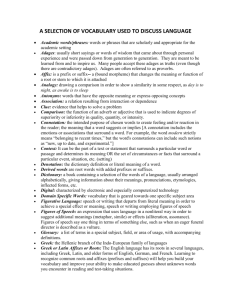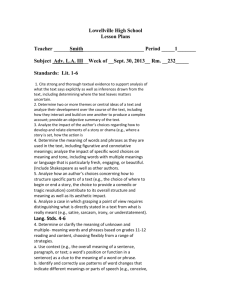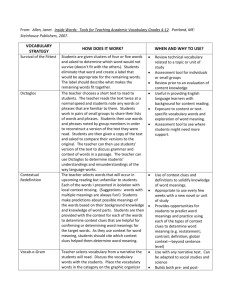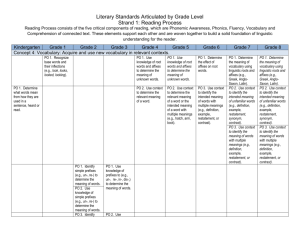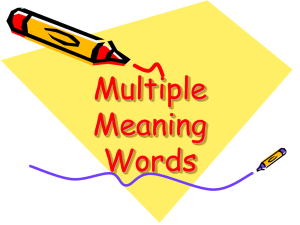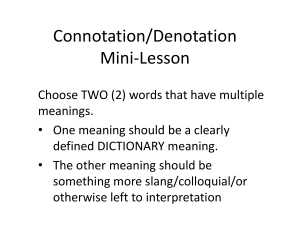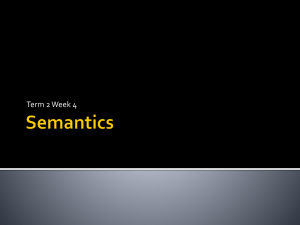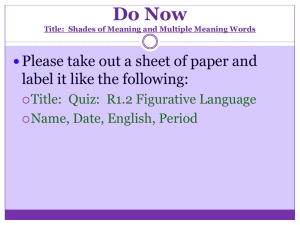Vocabulary: Classification
advertisement
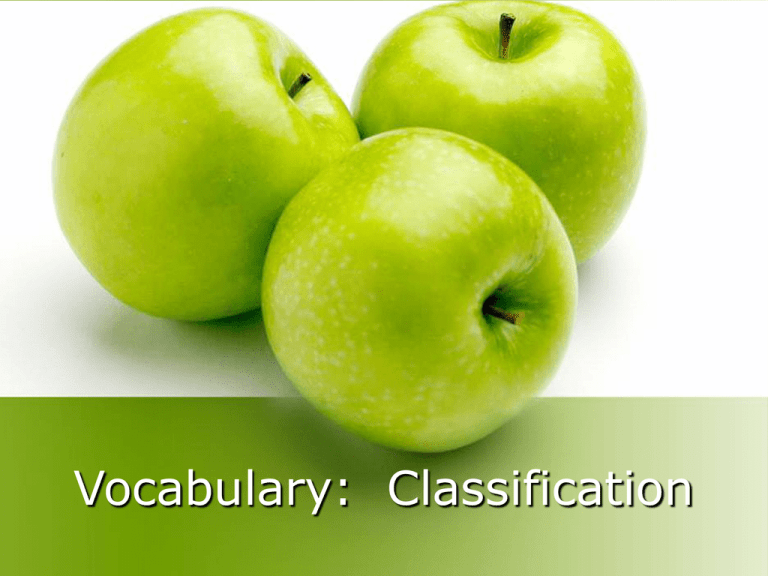
Vocabulary: Classification Explain to students that categorizing words can help them think about how words are related. Point out that categorizing is more helpful than trying to memorize a random list of words. When students learn new words, have them look for similarities and place them into categories. By placing words into categories you can better remember their meanings. Categorization is a strategy that can help you learn new words in any subject. LA. A. 1.2.3 The student uses simple strategies to determine meaning and increase vocabulary for reading, including the use of prefixes, suffixes, root words, multiple meanings, antonyms, synonyms, and word relationships. Objective Students classifying vocabulary words by relating them to other words with similar meanings or related groups. TASTE COLORS CAREER WORDS bitter indigo designer sour crimson ambassador delectable ivory employ tangy teal geologist violet professional Teach Students the Meanings of Specific Words 300-400 new word meanings can be taught per year through direct instruction. This is a significant proportion of the words that students who are at risk will learn. (Stahl & Shiel, 1999) Select words to teach that are important for understanding text. Words that students will encounter often, functionally important words. Use both context and definitions Find a synonym or antonym Classify the word with other words Relate the definition to one's own experiences Give multiple exposures Key Words The word _______ probably means… __________ is a kind of … __________ is a synonym for … __________ means the opposite of… The Frayer Model Example: Nonexample: field prairie pasture mountain ocean tundra meadow Definition: A grassy area often used for growing hay Other connecting information: The meadow that Semantic Feature Analysis This strategy effectively teaches vocabulary by activating prior knowledge and classifying new words by their features. A matrix is created with vocabulary words that have similarities on the left-hand side, and features of those words at the top of the matrix. Hierarchical Arrays Heirarchical Arrays help students understand how words are related to each other and show the relationships among word meanings. A sample hierarchical array is shown below. Example Item Type Multiple Choice Sample Which words from the story have almost the same meaning? A. B. C. D. Complained, wondered Passed, waited Puffed, popped Watched, looked Word Parts affixes (prefixes and suffixes), base words, and word roots. Affixes word parts that are "fixed to" either the beginnings of words (prefixes) or the ending of words (suffixes). The word disrespectful has two affixes, a prefix (dis-) and a suffix (-ful). Base words words from which many other words are formed. For example, many words can be formed from the base word migrate: migration, migrant, immigration, immigrant, migrating, migratory. Word roots words from other languages that are the origin of many English words. About 60% of all English words have Latin or Greek origins. Third Grade FCAT Distractors may include, but not limited to the following: Incorrect meanings of words or phrases • Correct meanings of words or phrases that do not fit the context • Words with construct similar to correct response (e.g. same prefix) • Incorrect interpretations of contractions • Fourth Grade Distractors may include, but not limited to the following: Incorrect meanings of words or phrases Correct meanings of words or phrases that do not fit the context Words with construct similar to correct response Fifth Grade Distractors may include, but not limited to the following: Incorrect meanings of words or phrases Correct meanings of words or phrases that do not fit the context Words with construct similar to correct response Plausible but incorrect responses based on the text Response Attributes Items assessing antonyms should not include synonyms as distractors; similarly, items assessing synonyms should not include antonyms as distractors.

